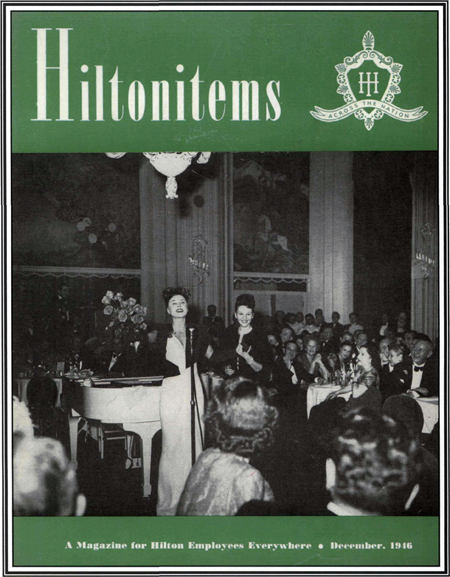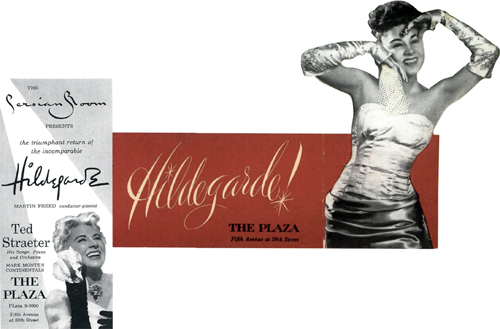

The Incomparable Hildegarde
The performer most associated with the Persian Room (and record holder for the most performances there—over one hundred weeks) first rose to prominence as a café singer during World War II. Born Hildegarde Loretta Sell, she was simply known by her first name (“the Incomparable” moniker was added later by an overzealous press agent) and began her career as a pianist. Her renown grew after she cut her teeth performing in Europe, and by the time she returned to Manhattan at the start of the war, she had acquired a signature song—“Darling, Je Vous Aime Beaucoup”—as well as several trademark accessories: elbow-length gloves, worn while playing the piano, and an endless supply of lace handkerchiefs (the tent card below right acknowledges her hankies with its own tiny version).
Although she performed in many other city nightclubs, Hildegarde established a cult following at The Plaza, and, at the height of her fame in the forties, she also hosted her own radio show and held endorsement contracts for perfume, nail polish, hosiery, and wallpaper. In addition, she made a notable contribution to the war effort by selling hundreds of war bonds in return for performing a song. Indeed, her rendition of “The Last Time I Saw Paris” epitomizes for a certain generation the heightened emotions of the war years. She made her last appearance in the Persian Room in January 1975, and no doubt she would be performing there today had the room not closed that same year.
Here, pictured on the cover of a magazine for Hilton employees, the singer introduces actress Mary Martin to a Persian Room audience; below left, a newspaper advertisement circa 1950.
